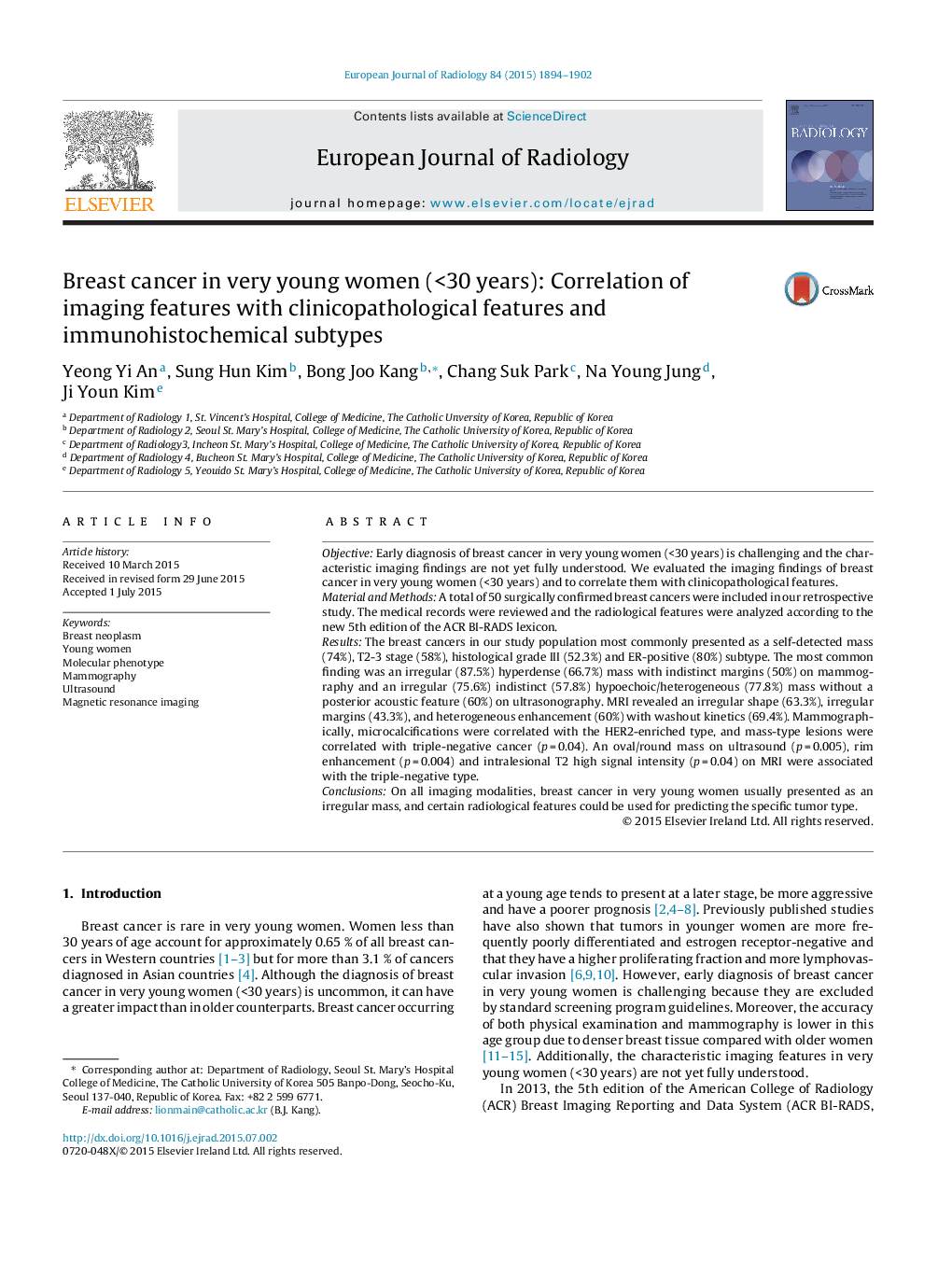| کد مقاله | کد نشریه | سال انتشار | مقاله انگلیسی | نسخه تمام متن |
|---|---|---|---|---|
| 4225168 | 1609749 | 2015 | 9 صفحه PDF | دانلود رایگان |
• Breast cancers in very young women (<30 years) presented as self-detected lumps (74%) and were more commonly characterized as invasive cancer of the T2 stage or greater with a higher tumor grade.
• In young women with dense breast parenchyma, ultrasonography and MRI is an effective imaging technique for detecting breast cancer, unlike mammography.
• The breast cancer in very young women presented as irregular mass of BI-RADS 4 or 5 on all imaging modalities, which were not different compared with the known breast cancer population. However, certain radiological features could be used for predicting specific subtypes (HER-2 enriched and triple-negative) and assist clinicians in both pretreatment planning and prognosis.
• Being familiar with combined clinical and radiological features of breast cancer in very young women may be useful for early diagnosis without missing cancer.
ObjectiveEarly diagnosis of breast cancer in very young women (<30 years) is challenging and the characteristic imaging findings are not yet fully understood. We evaluated the imaging findings of breast cancer in very young women (<30 years) and to correlate them with clinicopathological features.Material and MethodsA total of 50 surgically confirmed breast cancers were included in our retrospective study. The medical records were reviewed and the radiological features were analyzed according to the new 5th edition of the ACR BI-RADS lexicon.ResultsThe breast cancers in our study population most commonly presented as a self-detected mass (74%), T2-3 stage (58%), histological grade III (52.3%) and ER-positive (80%) subtype. The most common finding was an irregular (87.5%) hyperdense (66.7%) mass with indistinct margins (50%) on mammography and an irregular (75.6%) indistinct (57.8%) hypoechoic/heterogeneous (77.8%) mass without a posterior acoustic feature (60%) on ultrasonography. MRI revealed an irregular shape (63.3%), irregular margins (43.3%), and heterogeneous enhancement (60%) with washout kinetics (69.4%). Mammographically, microcalcifications were correlated with the HER2-enriched type, and mass-type lesions were correlated with triple-negative cancer (p = 0.04). An oval/round mass on ultrasound (p = 0.005), rim enhancement (p = 0.004) and intralesional T2 high signal intensity (p = 0.04) on MRI were associated with the triple-negative type.ConclusionsOn all imaging modalities, breast cancer in very young women usually presented as an irregular mass, and certain radiological features could be used for predicting the specific tumor type.
Figure optionsDownload high-quality image (169 K)Download as PowerPoint slide
Journal: European Journal of Radiology - Volume 84, Issue 10, October 2015, Pages 1894–1902
